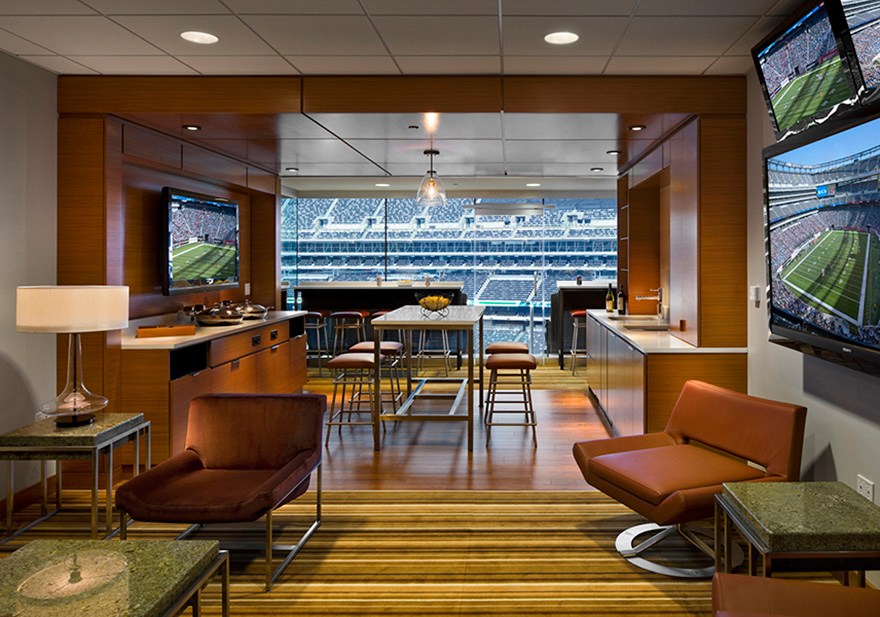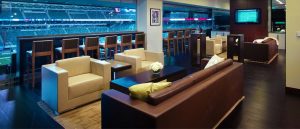
Throughout the country, many athletics departments are operating in crowded markets where competition is high for consumer’s time and money. Whether it’s other philanthropic organizations or other entertainment offerings, those responsible for securing premium seating revenue must mix ingenuity and grit in order to drive revenue for their department. Therein lies the question – what’s required to attract today’s premium seating customer?
An entrepreneurial mindset coupled with an emphasis on the customer experience.
Aside from the student-athletes, we serve, our most precious resource remains our consumers who actively engage in our offerings. Across the nation, we’re seeing universities double down on the in-venue experience, building new premium seating spaces in non-traditional areas of the stadium to retain and attract new customers to their venues.
How can my organization leverage a premium experience within our market?
Attract New Clients Through Technology
We live in an environment where everyone consumes information in different ways. Appreciating this opportunity allows us to identify additional ways to attract new business to your university. Below are some lead segments that should be considered within your organization when building out a premium sales campaign.
 ◾Secondary Market Buyers – if your ticketing platform has secondary market integration, this should be your first group because they’re the closest group who’ve experienced game day in existing areas of your stadium.
◾Secondary Market Buyers – if your ticketing platform has secondary market integration, this should be your first group because they’re the closest group who’ve experienced game day in existing areas of your stadium.
◾Web Tracking – tying in your marketing automation with key web pages highlighting your offerings allows you to identify who’s visiting these pages and their behaviors along the way. If you can identify their online journey, they’ll leave breadcrumb trails on what matters most to them (i.e. a specific premium amenity, parking, bowl tickets, etc.). More buyers than ever before conduct some form of online research before they speak to anyone in your organization, so you’ll not only be catering to their desired purchase process but generate new leads for your team.
◾Social Media Ads – a lot has changed recently with Facebook’s adjustments to its ad algorithm, but it remains the best vehicle to reach people in non-traditional ways. Identify which characteristics or locations your current premium seating patrons exhibit, then tailor your ads to these same demographics. Relying on Facebook’s Lead Gen Forms to collect information instead of your own website increases your lead count as people engage better on native sites.
◾ZoomInfo – offers the ability to develop a lead list consisting of a wide range of characteristics, such as executives who live nearby or graduated from your university.
◾Alumni Lists – partnering with your university alumni office can lead to new opportunities with existing relationships on campus. Collaborating with your University Advancement team can lead to additional opportunities to grow your footprint.
◾Web Re-targeting/ Geo-Fencing – once someone visits a specific sport page or schedule on your main website, serve ads to them using other websites (i.e. ESPN, Local Newspapers, etc.).
Also, try using geo-fencing technology to serve ads on your project for those entering a specific area or zip code. You already know some affluent area codes within your region so this can be another opportunity to attract new prospects who resemble your existing donors. 
Be the Guide, not the Hero
One of my favorite books on marketing is Building a Storybook Brand by Donald Miller. For many of us, we tend to creep into a cookie-cutter approach with our customers where we assume everyone wants to be sold the same with the same purchasing journey. Here’s an important reminder from Miller, “When we position our customer as the hero and ourselves as the guide, we will be recognized as a sought-after character to help them along their journey.”
If we can position ourselves as the guide, we’re able to build rapport more quickly because consumers know we’re invested in adding value to their experience not simply trying to sell tickets. When done correctly, we’ll identify exactly what makes our customers tick as well as how your organization aligns with their wants and needs. Regardless of their motivation, focus your efforts on mastering the details throughout the process. People will never give you an opportunity down the road with the big things if they can’t trust you with the little ones during these initial conversations.
Make your Fundraising Process Scalable
If you ask student-athletes what their most challenging adjustment from high school to college is, it often centers around two things: the speed of the game and the margin of error. Similarly, the challenge some face when selling high-end tickets or major gift fundraising is the inability to control the controllables.
 When we have meetings with high net worth donors, we have to incorporate natural ways to control the conversation or we’ll be subject to it controlling us. Developing this skill set doesn’t happen overnight so focus on a specific part of your fundraising process in one of the following areas:
When we have meetings with high net worth donors, we have to incorporate natural ways to control the conversation or we’ll be subject to it controlling us. Developing this skill set doesn’t happen overnight so focus on a specific part of your fundraising process in one of the following areas:
◾Impact Statement – When thinking about the first interaction with a prospect, what can you say to summarize what your donors experience with your organization? An effective Impact Statement showcases the opportunity for the donor to participate and what options will be available at the conclusion of the meeting (i.e. selecting seats or signing gift agreement). Setting the tone for the meeting on the front end removes any surprises when you ask for the gift.
◾Effective Listening – It may sound simple but mastering effective listening is one of the most challenging skills for an entry-level rep to master. Generally, we go into full presentation mode rather than asking questions to find common ground between the donor and your organization. Additionally, when you’re involved in complex discussions, you’ll need to rely on trial closing to make sure your offerings are in alignment with the consumer’s interests.
Trial closing involves bridging what you’ve learned from the customer and an experience you have to offer. One of my favorite trial closing questions is, “Based on what you’ve said, I believe you’re looking for an experience with XYZ (i.e. private lounge access). Did I hear you correctly?” The feedback you receive allows you to pivot quickly to another offering or reinforce the perceived value to ultimately ask for the gift.
◾Asking for the Gift – It’s one of the most challenging things to master in fundraising but it can shorten the fundraising cycle significantly when done correctly. Identify your personal style but keep to the basics. Asking for the gift should be a natural conclusion to your meeting. Are there some people who will still need some convincing? Absolutely, but each trial close you used throughout your meeting can now be used as your reasoning for them to commit.
There’s no greater tool to overcoming objections than the words right out of the person’s own mouth, which is why it’s so important to be a master of effective listening. If no decision is made during this meeting, always be intentional on the next steps as this keeps the fundraising cycle from dragging out for weeks. 
Premium seating sales offer one of the most fluid types of sales or fundraising within an athletics department where you’re often in front of some of the most affluent people in your market. It’s important to remember that these people are being offered something each day so you must identify what your organization offers that is different from others.
Be creative and take risks when trying to reach these groups. Underperforming campaigns are all part of the process, but success often lies on the other side of these setbacks if we allow ourselves to go beyond our traditional processes.
Allow your customers to be the Hero of your organization and embrace being the Guide – every minute of it.
